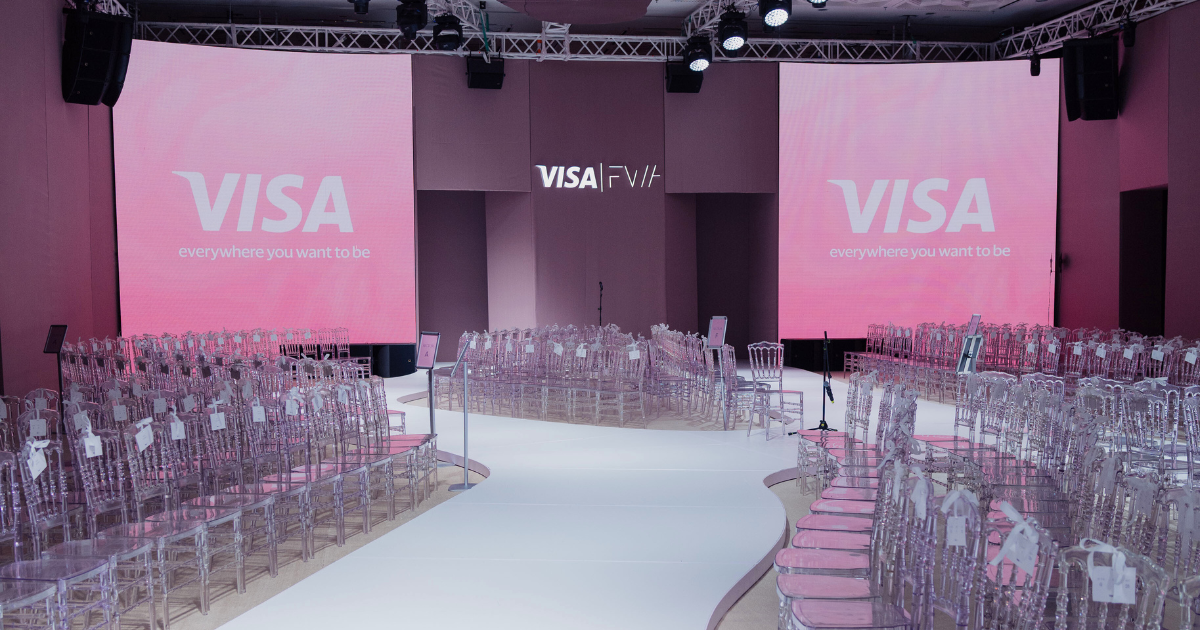Upcycling, fashion graduates, and breaking stereotypes at Copenhagen Fashion Week
Top trends and standout collections from Copenhagen
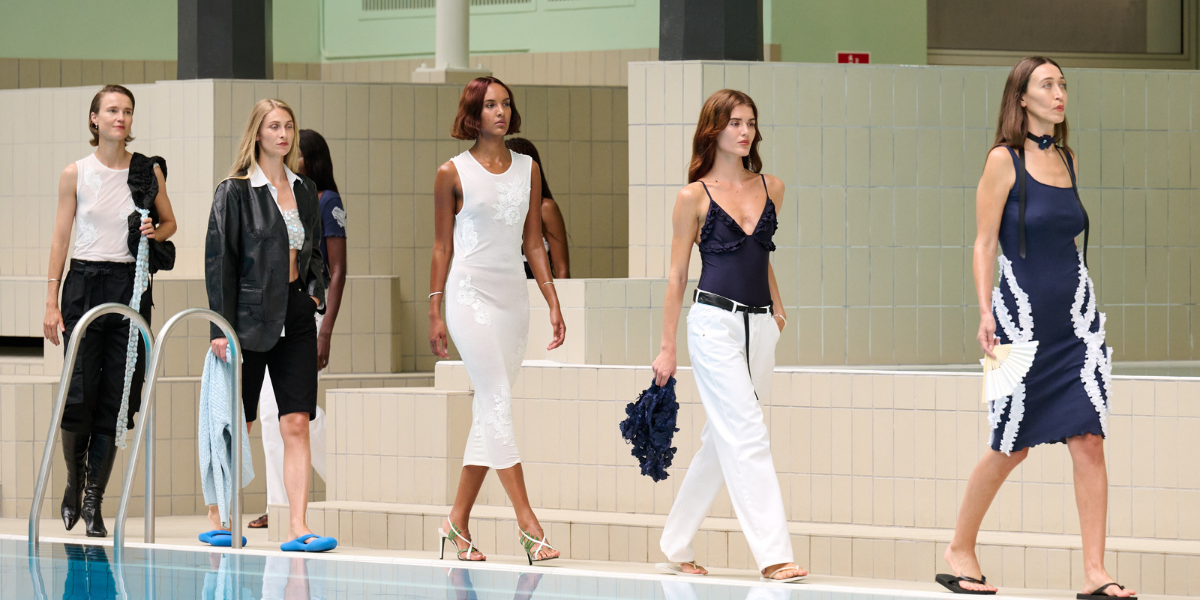
Copenhagen traditionally opens the new Spring-Summer 2026 fashion season, instantly becoming a focal point and a platform for the sustainable future of the industry.
Each year, it attracts an increasing number of professionals from around the world. Street style, emerging and established brands, outdoor and unexpected venues, a packed program – from morning breakfasts to bold parties. This is just part of what we love about the local Fashion Week.
This season, the event partnered with the dynamic full-spectrum trade show CIFF, representing around 1,000 brands. The alliance between Denmark’s two most influential fashion forces has evolved into a long-term strategy to support and develop CPHFW NEWTALENT – a program designed to promote forward-thinking designers from Northern Europe.
Overall, Scandinavian style balances between pure minimalism and conceptual avant-garde, combining practicality, clarity of form, and tactile comfort. However, not all local names stick to laconicism – some collections are quite unexpected.
OpéraSPORT
A runway show in a swimming pool from OpéraSPORT – an intriguing design solution for Fashion Week. Inspired by a recent trip to Seoul, the brand’s founders, Stephanie Gundelach and Awa Malina Stelter, translated the city of contrasts into clothing. With its quiet traditions and dynamic urbanism, the city looks merged the past and the future. The color palette of the collection "lulls the mind" – sage, buttery gold, smoky blue, soft pink, and the signature pastel green. A symbolic highlight is the brand’s original print featuring the hibiscus flower – Korea’s national plant. Key pieces included sculptural dresses, semi-transparent lace with 3D flowers, architectural suits, and a vegan leather jacket embroidered with traditional floral motifs. The brand remains true to its eco-conscious approach, using recycled and organic fabrics.
This season’s collaboration with Havaianas, which introduced the world’s first 3D-printed flip-flops on the runway, is sure to become a bestseller.
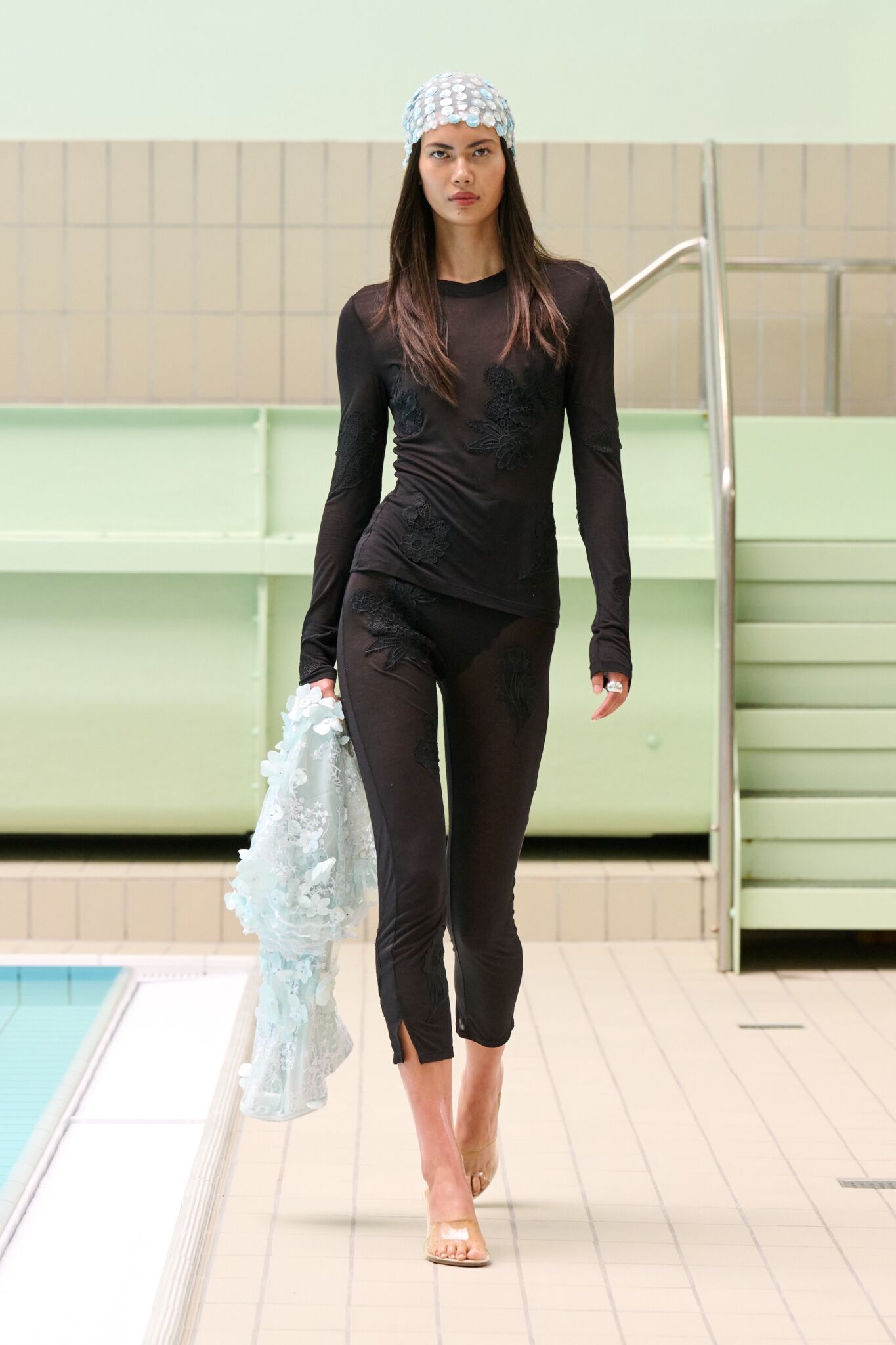
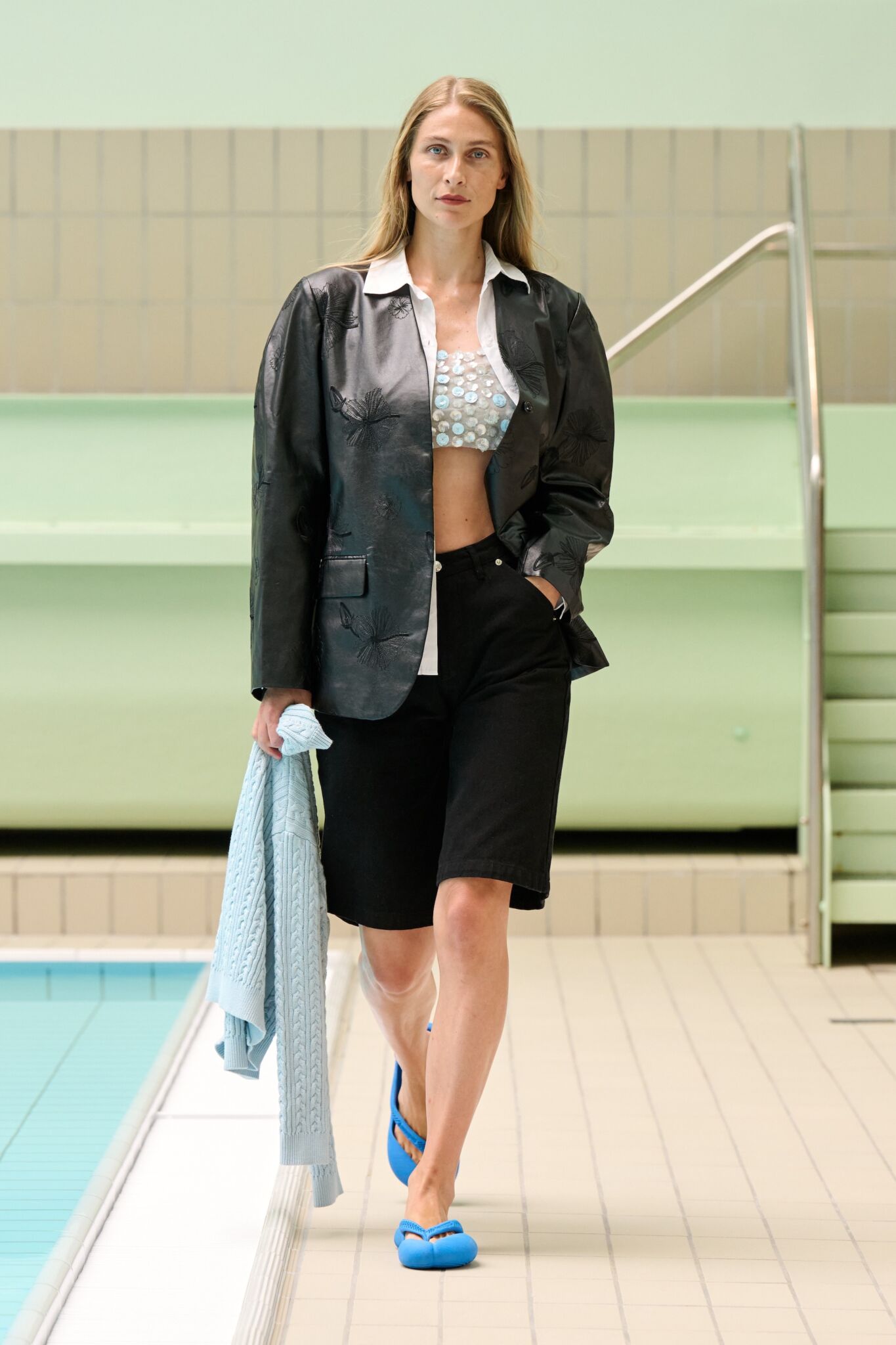
Forza Collective
Forza Collective by Kristoffer Kongshaug is a masterful intertwining of 1920s sophistication and 1990s minimalism. Reinterpreting the past through a modern lens, each piece sparks a dialogue between sharp forms and soft lines, highlighting the brand’s signature aesthetic.
Meticulous work with silhouettes appears in recognizable volumes, complemented by intriguing details like tie tops and cut-outs. The color palette is restrained but expressive – inviting one to examine the garments closely and feel their mood: predominantly black, white, gray, and red hues. The garments embody transformation: asymmetric hemlines and fluid fabrics. Craftsmanship is paired with subtle elegance, creating looks that are bold and understated at once.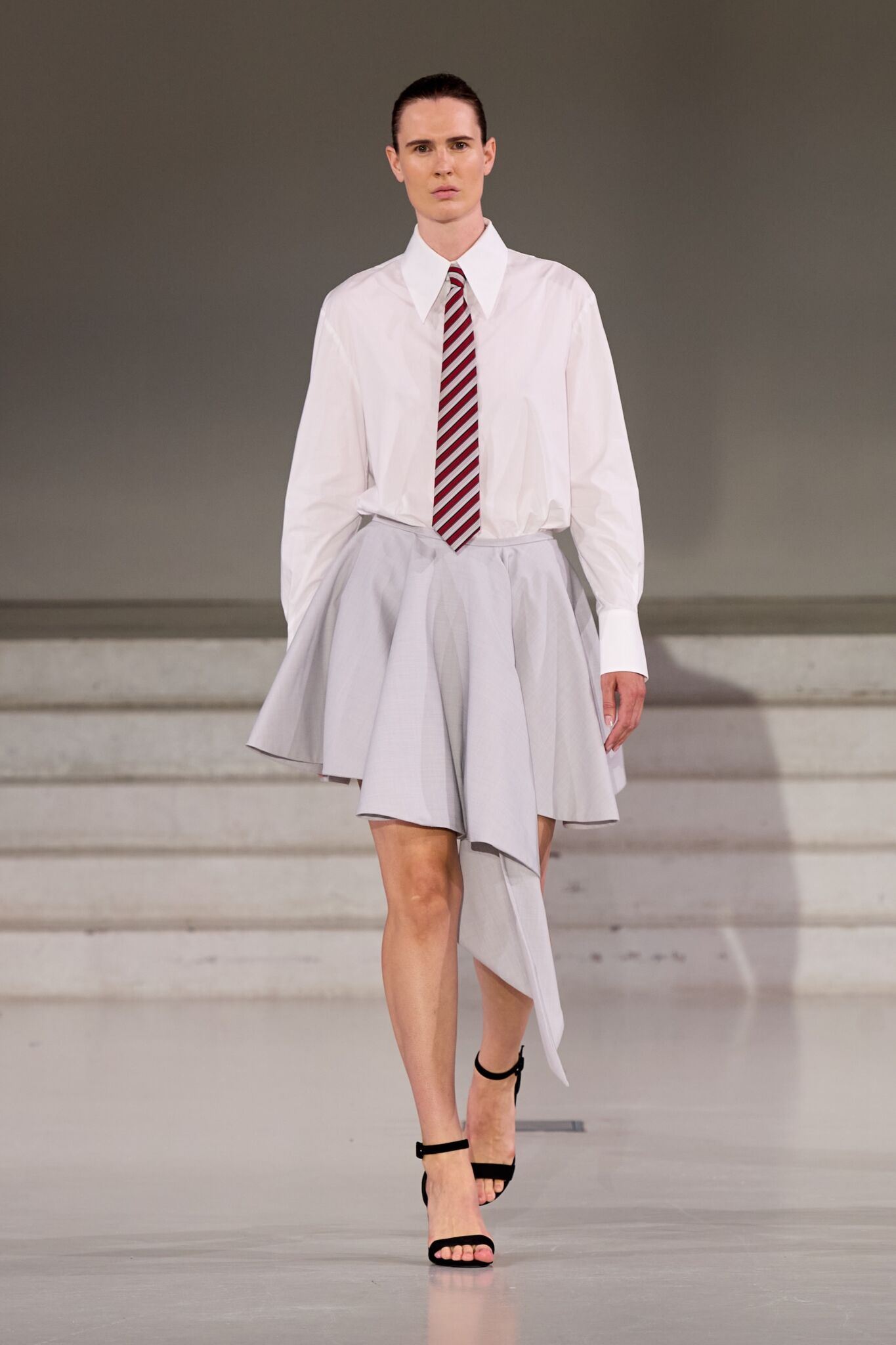
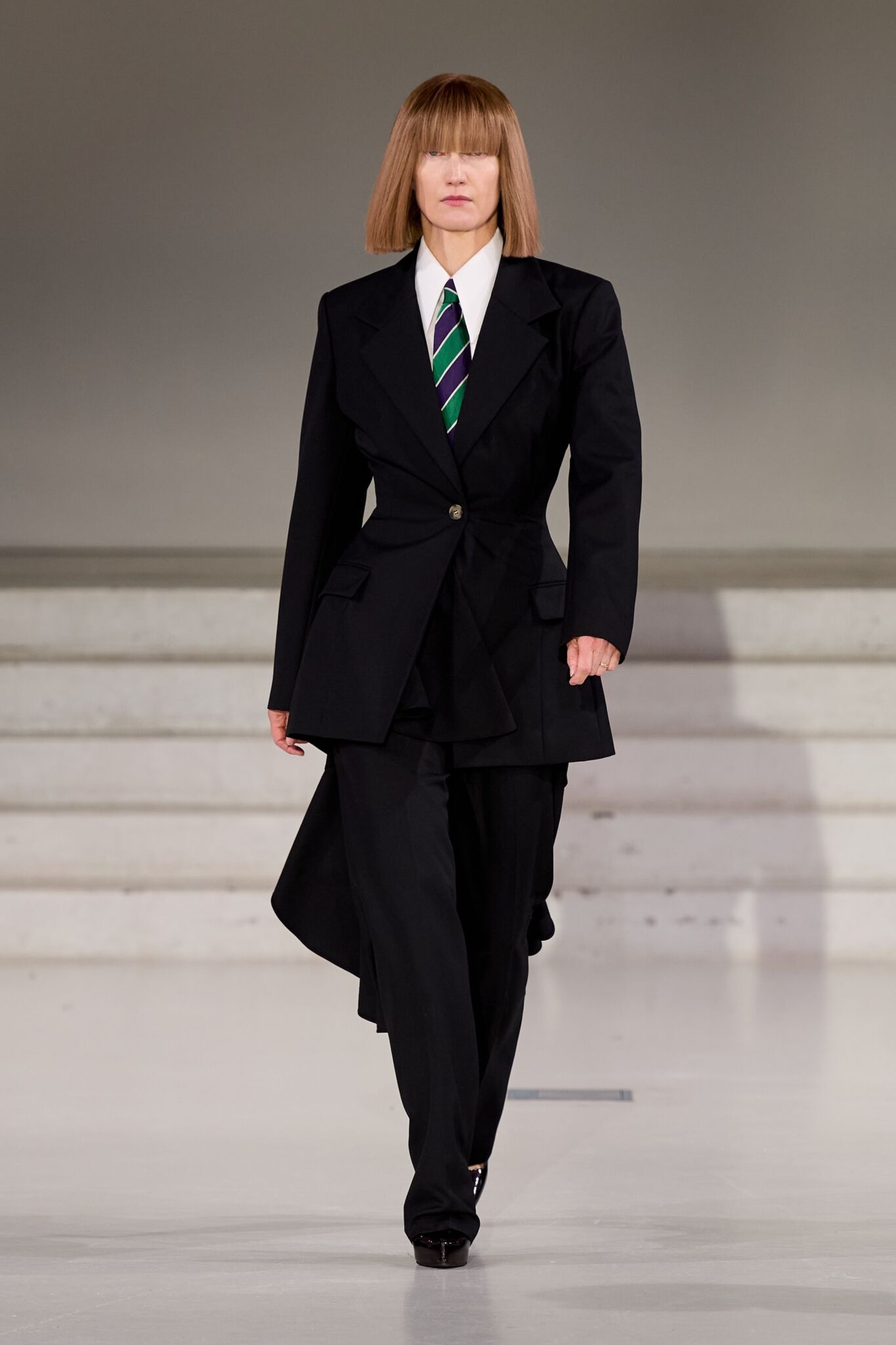
Swedish School of Textiles
The show by graduates of the Swedish School of Textiles addressed themes of identity, memory, and imperfection. The future professionals of the industry combined experimentation, deep research, and a creative approach, working in high-tech labs and studios while mastering the techniques and language of innovation.
For example, Zuzana Vrabelova speculates on clothing as structures that arise independently of the human body yet interact with it. Knitting is used as the main tool, transforming simple strips of fabric into complex sculptural structures. The textures resemble hair, skin, or bones, blurring the line between body and textile. Margot Leverrier explores the dialogue between opposing textile techniques: matte felt and lace. Rooted in the lace heritage of Normandy, she reimagines these crafts with a modern perspective, blending handcraft and industrial processes. Lan Krebs discovered a new application for single-layer jersey: “Development of single jersey, often perceived as a simple, plain fabric, functional and modest in its appearance. This work challenges that assumption by transforming jersey into a dynamic material language. Using machine-made tubular knits explored the potential of layering, wrapping and sculpting fabric directly on the body without imposing a garment definition.”
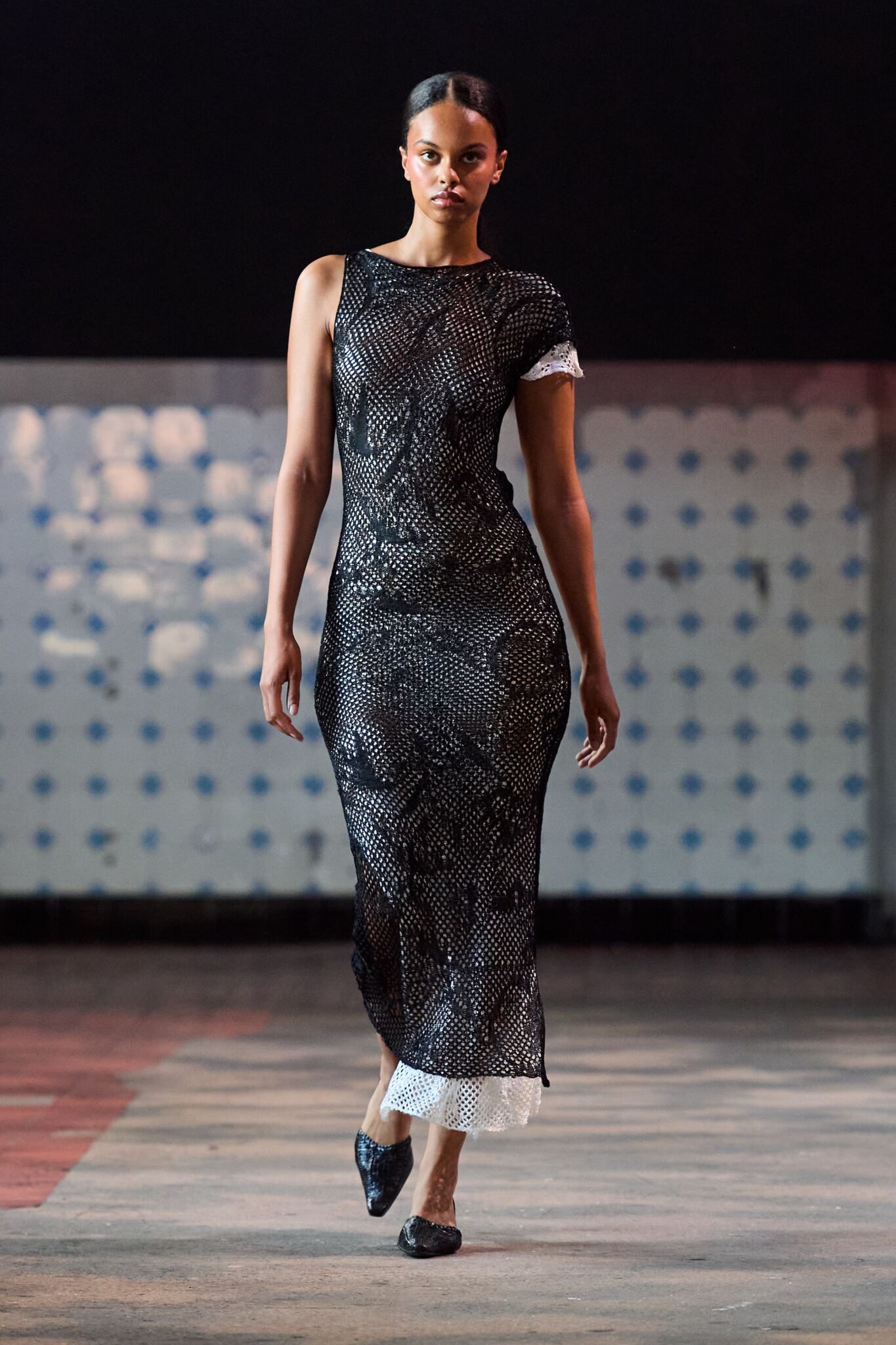
Kettel Atelier
A real-life installation by Kettel Atelier united fashion, art, and ecological thinking. In the collection “Unravel,” clothing became a canvas, and creativity – an action. The line’s foundation is a bohemian spirit and upcycling craftsmanship, expressed in layered silhouettes, lace, and vintage textures. Each item is a unique art object born at the intersection of fashion and personal story.
Guests witnessed the creation process – from painting to performance, which became part of the brand’s narrative. The aesthetic of the look is like tactile poetry, where material and emotion merge in one breath. Instead of a runway – a living stage, breathing alongside the audience.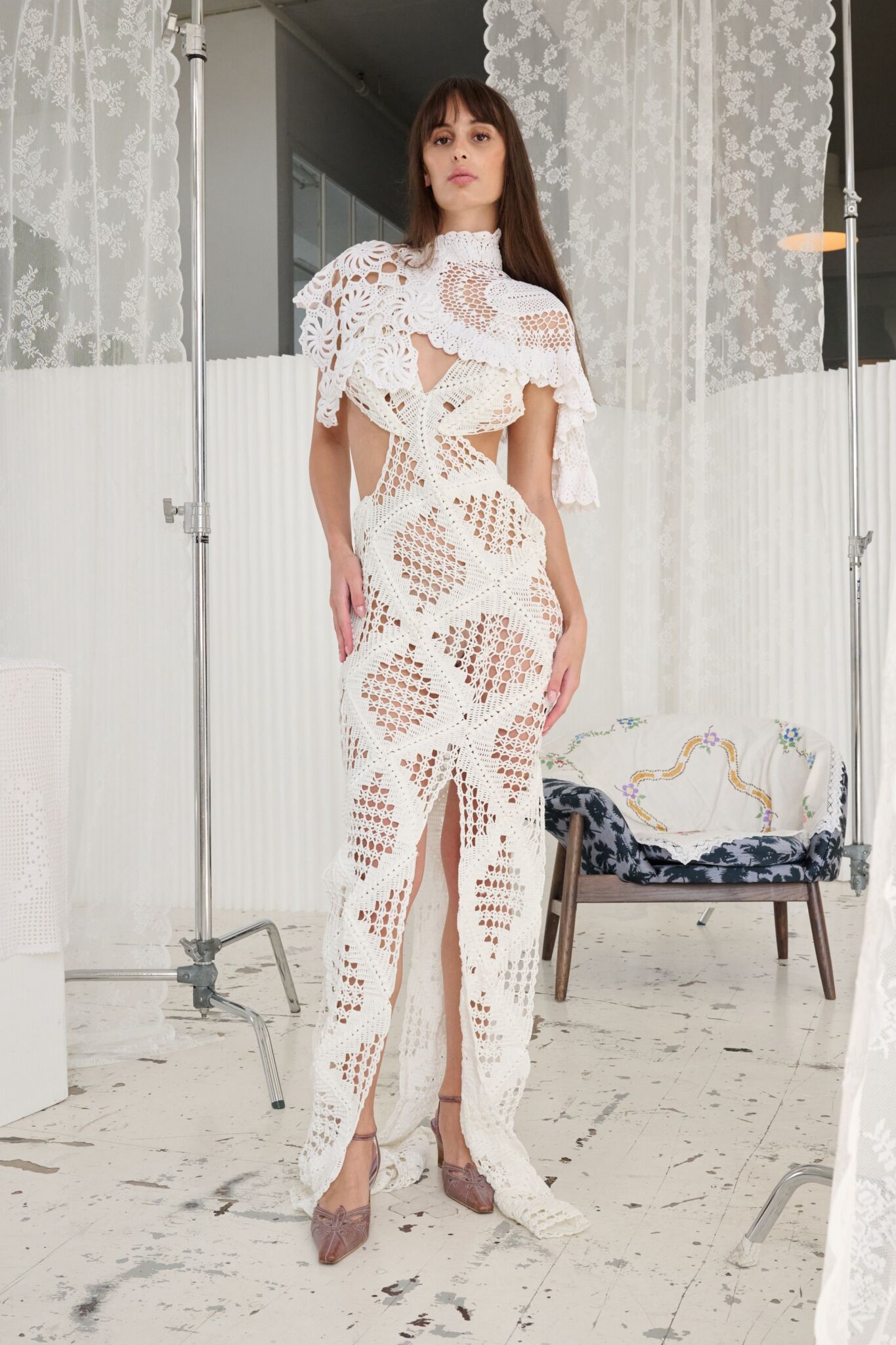
Taus
Inspired by the figures of Edith Bouvier Beale and Sinéad O’Connor, the Taus collection became a poetic reflection on women whose lives were once misunderstood or rejected by society.
The presentation took place at the historic Villa Kultur in Østerbro, where models lounged on blankets, read books, and shared a moment of quiet.
The central theme was the elusive sensation of time, with blurred lines between past and present. This is not just clothing, but a vessel of memory. All pieces were handmade in a small atelier in central Copenhagen – dyed by hand using tea, coffee, and beets to convey a natural aging effect. The collection used only vintage and recycled materials, which not only reflect the brand’s sustainable approach but also create a unique aesthetic. Among the standout looks are a 1920s-style dress made from an antique scarf, a wedding suit from vintage napkins, and a top from an old vest turned inside out.
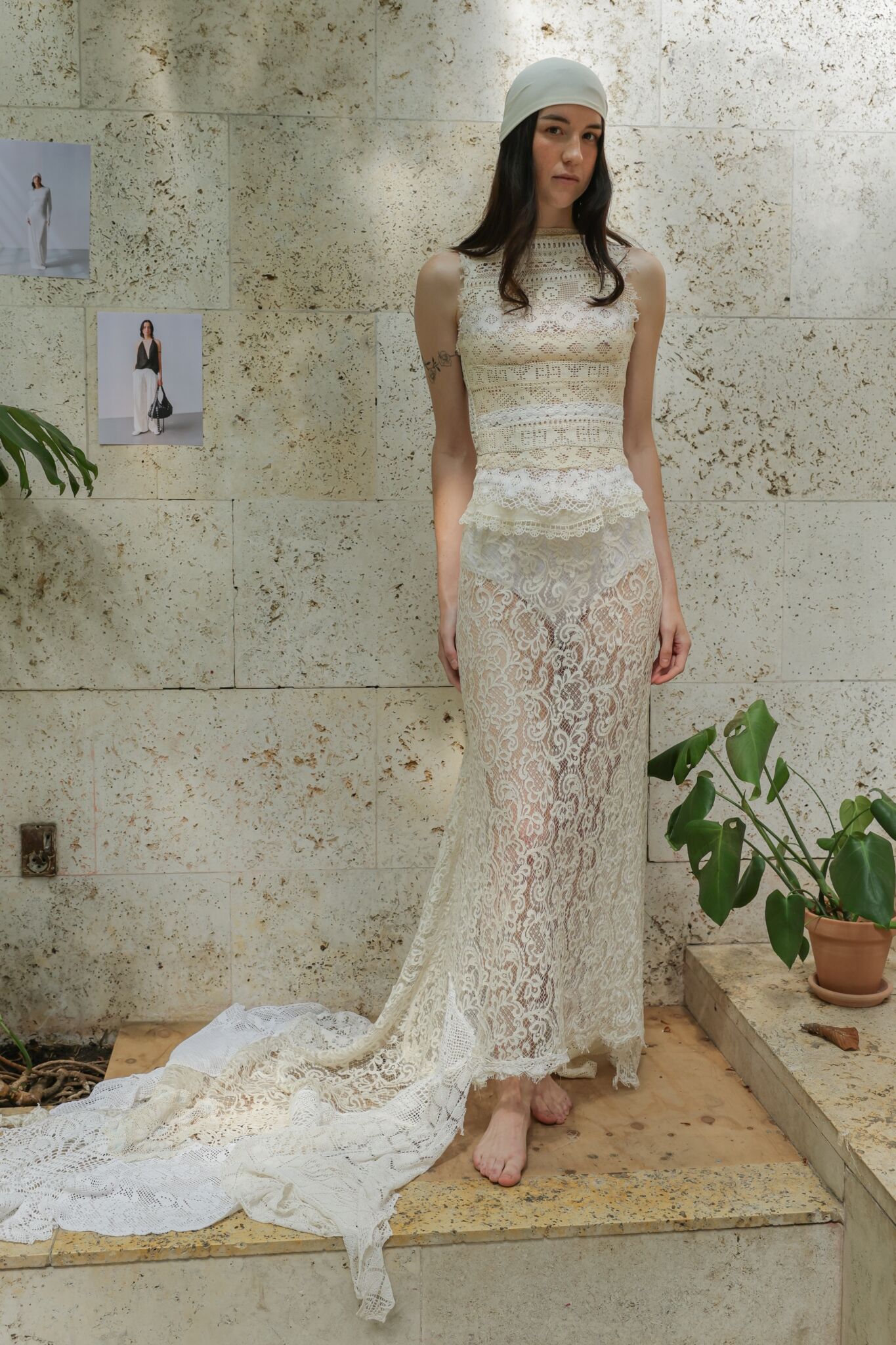
Skall Studio
This season, sisters Julie and Marie Skall were inspired by the art of dance. In the collection “La Dans Act II,” they replaced strict choreography with sensual movement through flowing silhouettes and a line of accessories. The garments breathe with ease and freedom, as if the wind dances through them – flared sleeves on dresses, loose-fitting pants, comfortable blazers, and ultra-cozy denim. Skall Studio continues to explore sustainability: for the first time, it introduced footwear made from a leather-like material derived from Sicilian oranges and cactus by-products. The same material is used for luxurious belts and soft handbags. It seems the sandals will soon be all over Danish influencers.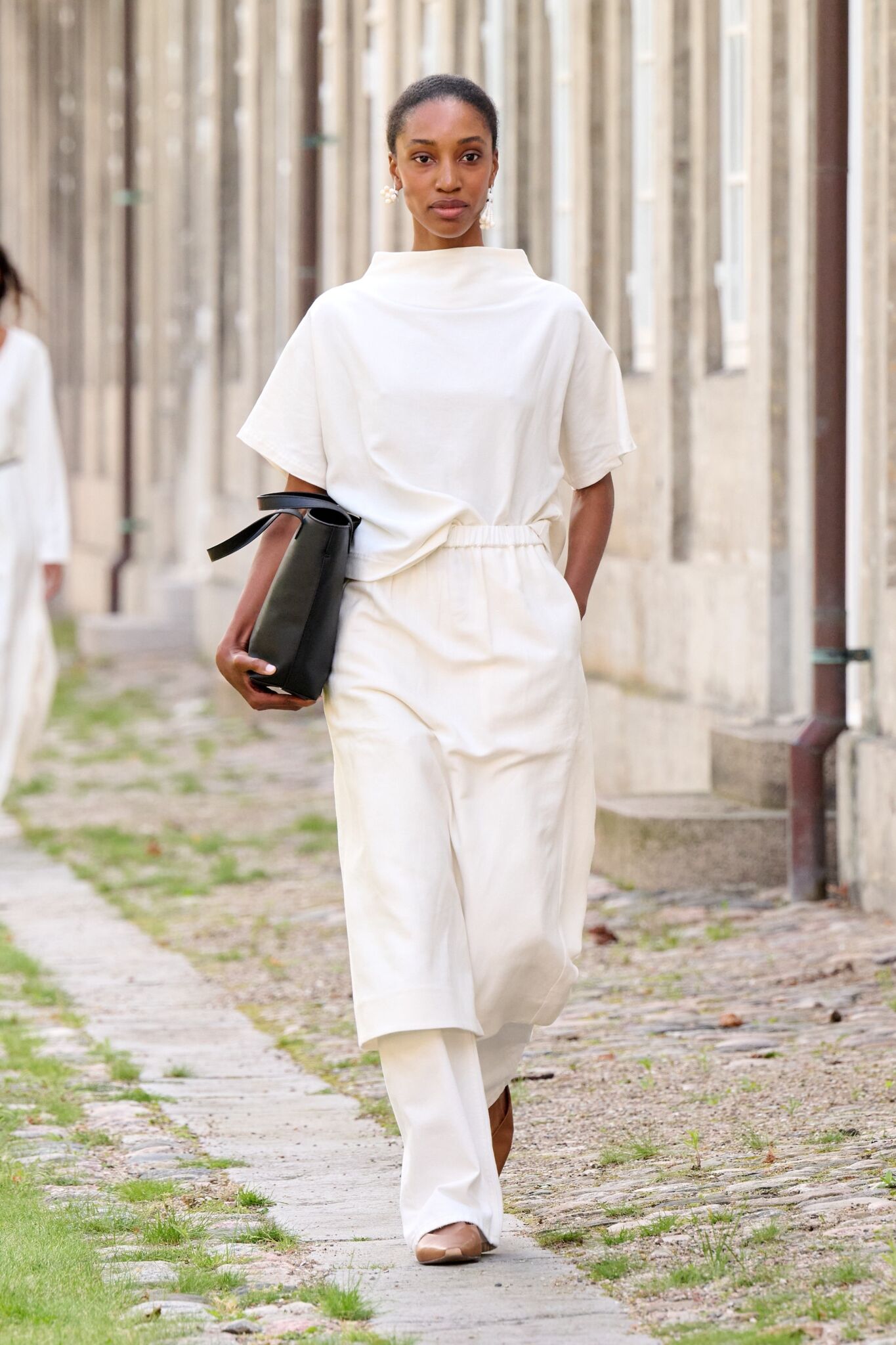
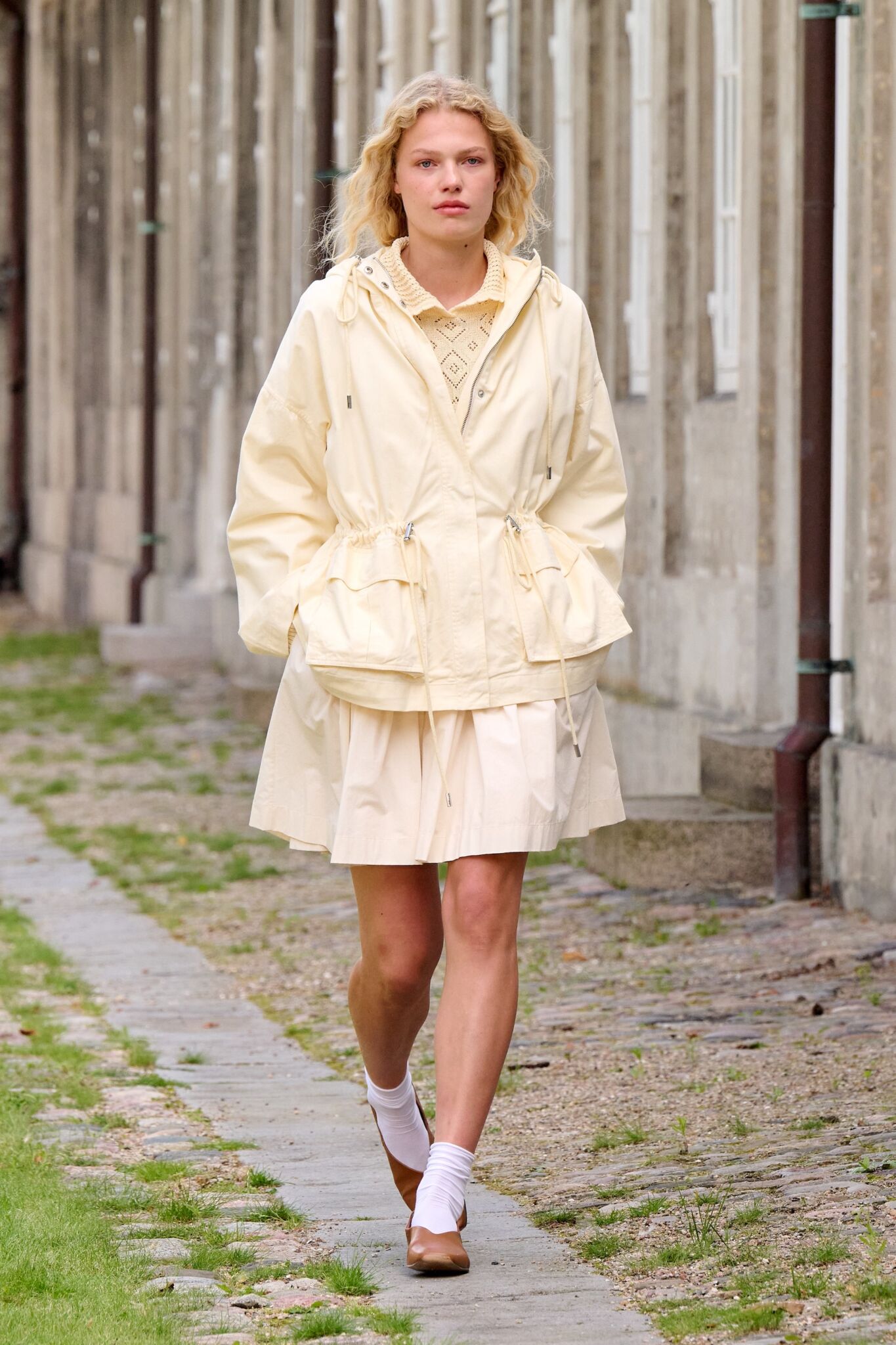
Martin Quad
Martin Quad’s profound interpretation of fashion is an exploration of themes of destruction, tradition, and avant-garde couture in a style of sterile anxiety. The concept is built around six symbolic acts referencing the "Star of Life" – the ambulance emblem – each revealing an aspect of human fragility and recovery. Jackets are transformed: sleeves are sewn inward, hiding structural lines and creating a seamless silhouette. Pants rise to the chest, mini-skirts barely reach the hips. Belt loops become suspenders, and collars extend to the base of the neck, evoking associations with medical gear. Only “deadstock” and recycled fabrics were used – the brand presented pieces created in collaboration with an Italian manufacturing partner. 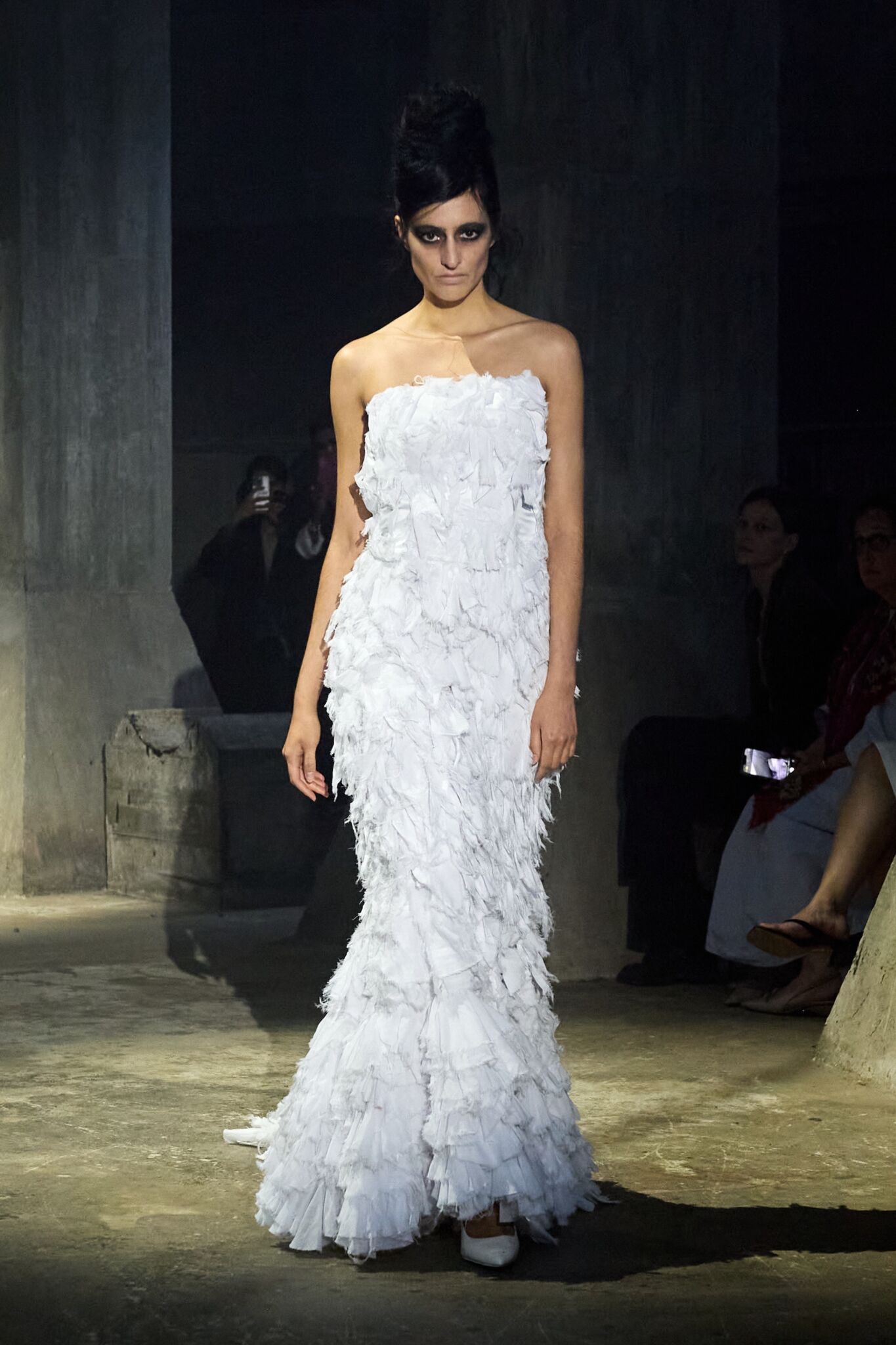
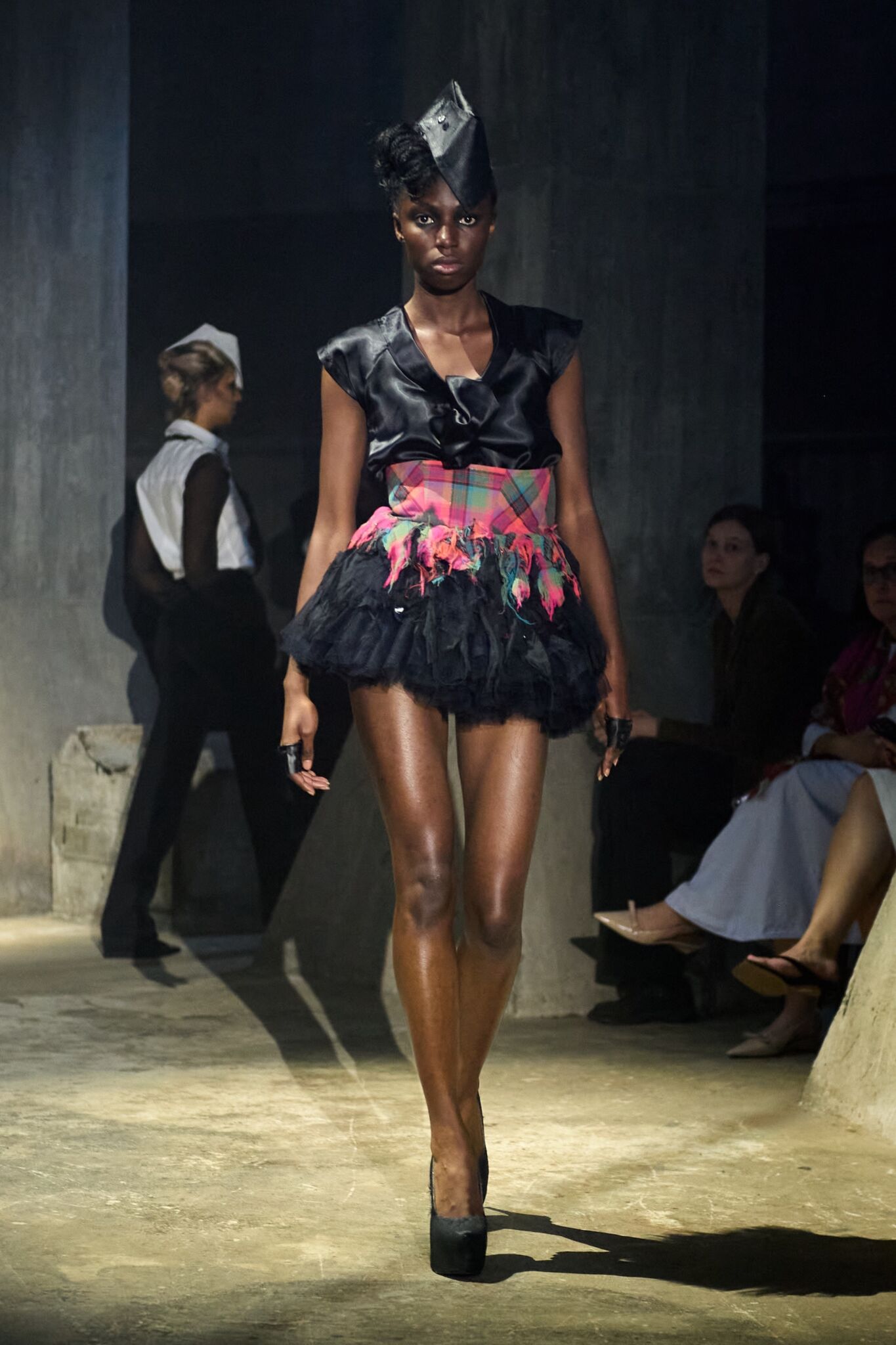
Han Kjøbenhavn
Han Kjøbenhavn presented “Another Day” – a story of repetition, realism, and emotional heritage, not an escape from reality. Reworking suburban fragments into silhouettes and surfaces, designer Jannik Wikkelsø Davidsen continues to create a design language based on autobiography, where past and present blur. The clothes are inspired by this world but reimagined through exaggeration and tension. Faux-leather bomber jackets are loose and padded, mesh tracksuits hug the body, creating a look that is both sporty and celebratory. A leather tank top worn under a molded vest combines protection and function. Feathers – deliberately artificial – trace the lines of shoulders or collarbones, and silver sculpted tops fit like muscles, paired only with boxers and sneakers. The style ranges from streetwear to ceremonial, clashing bodybuilder bravado with softness and restraint.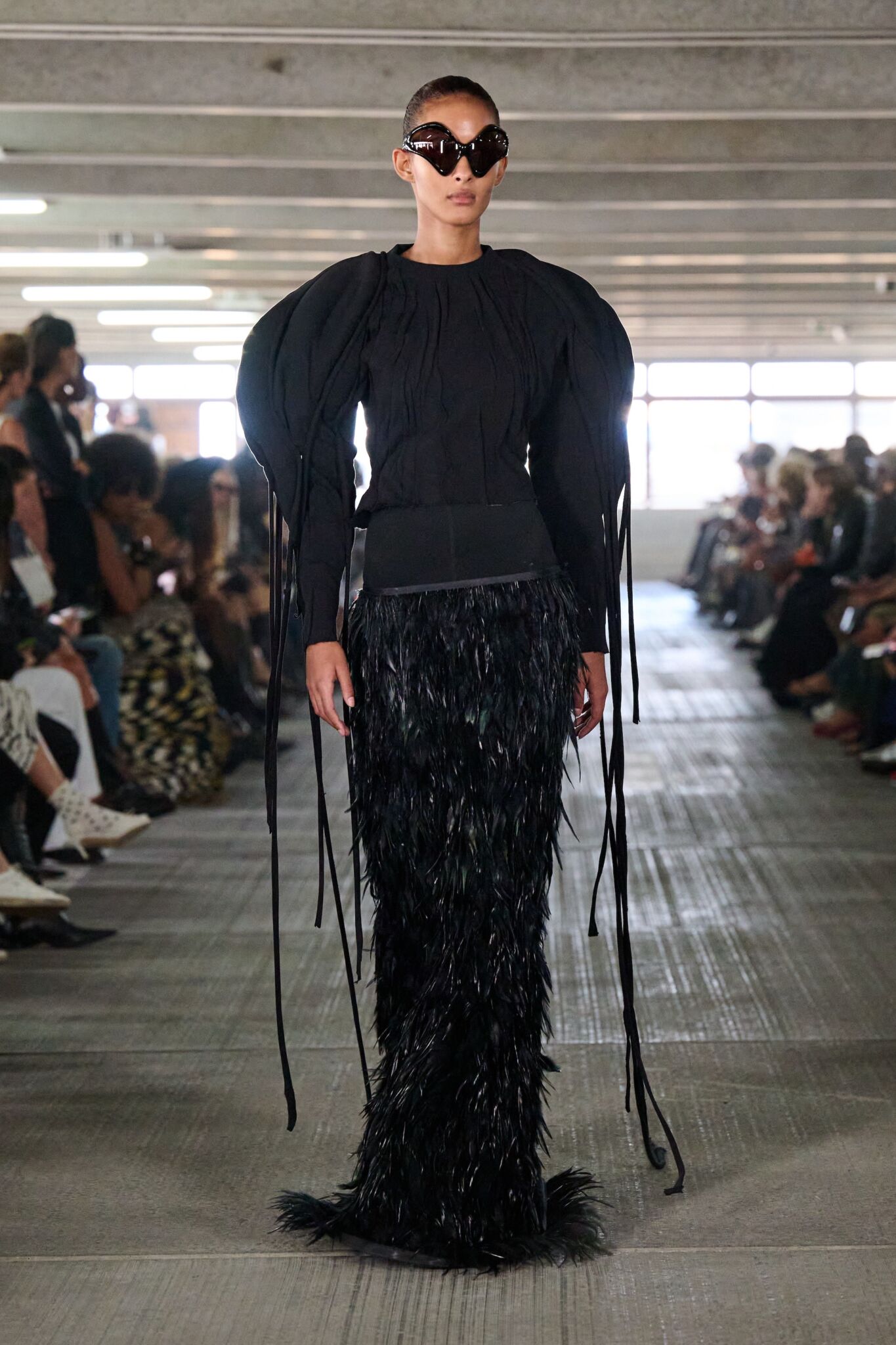
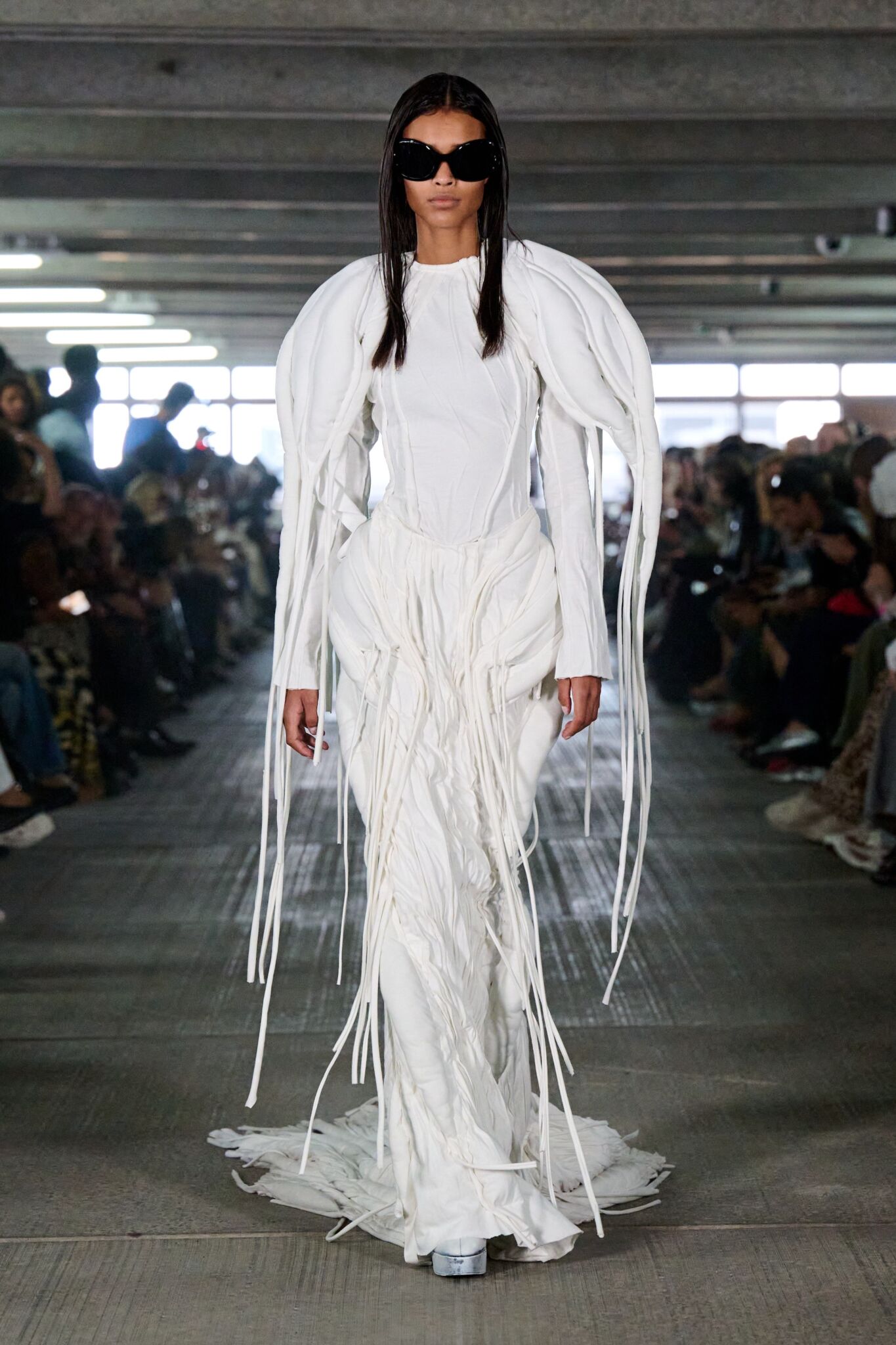
Rolf Ekroth
Rolf Ekroth manifests pragmatism, survival, and personal transformation against a backdrop of global instability. The “Encore” collection is self-reflection and a rethink of design strategy, where past season failures become building blocks for the new. Items from previous collections get a second life: for example, six old pairs of jeans become cloud-patterned trousers, and life jackets are transformed into fluid silhouettes. The wardrobe is updated with morning robes in five variations, from red plaid to styles with protective padding. Collaborating with Finnish recycling company LSJH, the designer emphasizes sustainability and upcycling, turning vintage Finnish fabrics and denim into refined materials. The color palette ranges from workshop grays to soft whites and anxious oranges. Each piece radiates artisanal energy – 15,000 hand-sewn pearls, reversed laser logos, polka dot elements. Looks are perfectly complemented by silver jewelry made with Ildar Wafin, embodying the theme of organic growth from leftovers.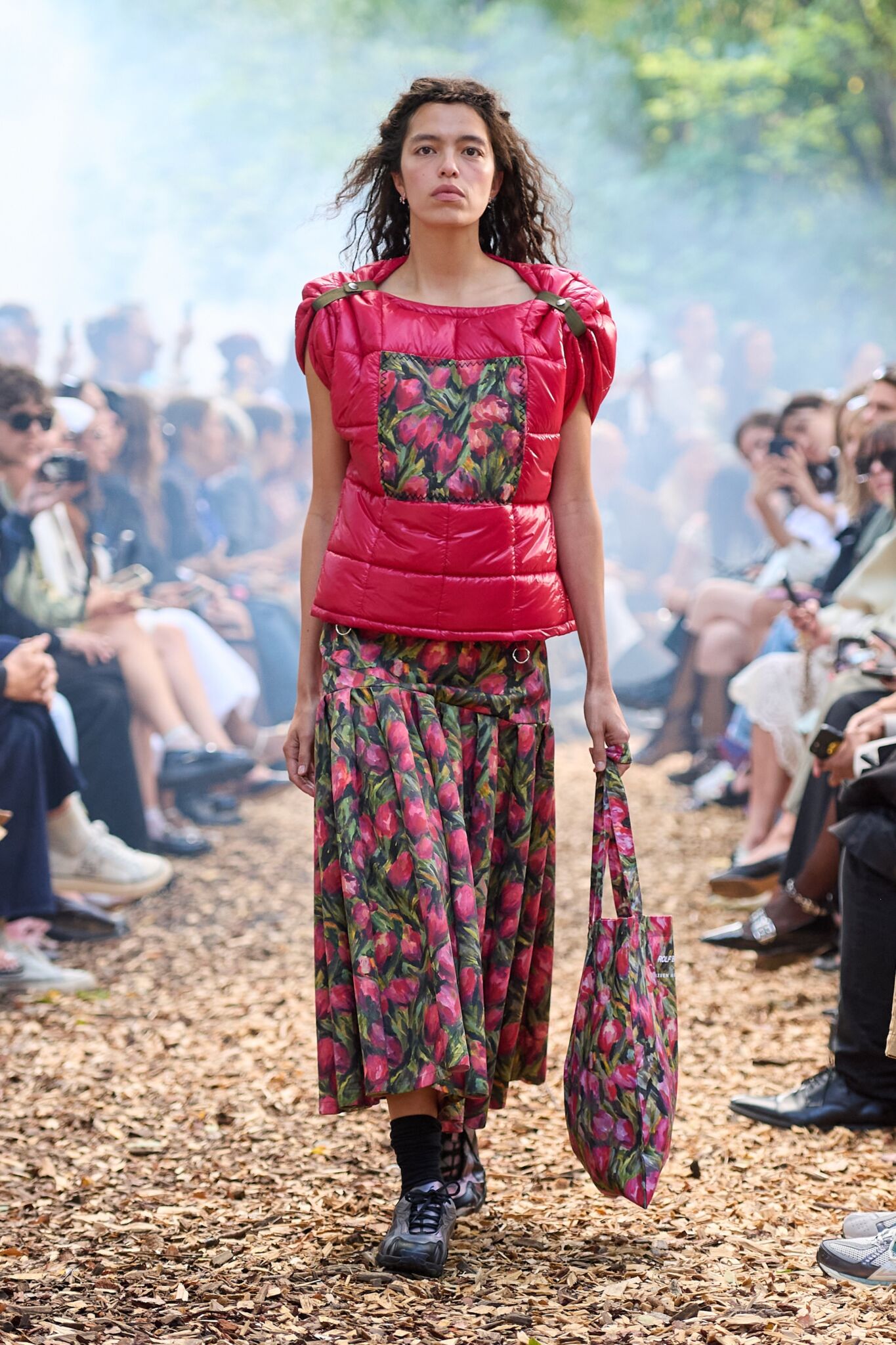

Alis
The second season for Alis came through more confidently and cohesively than the debut. The palette evolved from reserved beige-blue checks to bright mustard, sky-blue stripes, and purple patterns. Each color shift was accompanied by a change in mood – from restrained to playful, indifferent to nearly romantic. The line conveyed a sense of freedom, lightness, and inner drive. The finale – models boarding a boat and sailing away – became a metaphor for breaking from convention. The brand continues to speak the language of the street, skateboarding, and sincere self-expression. It remains loyal to its roots, cultivating a spirit of community and uncompromising creativity. 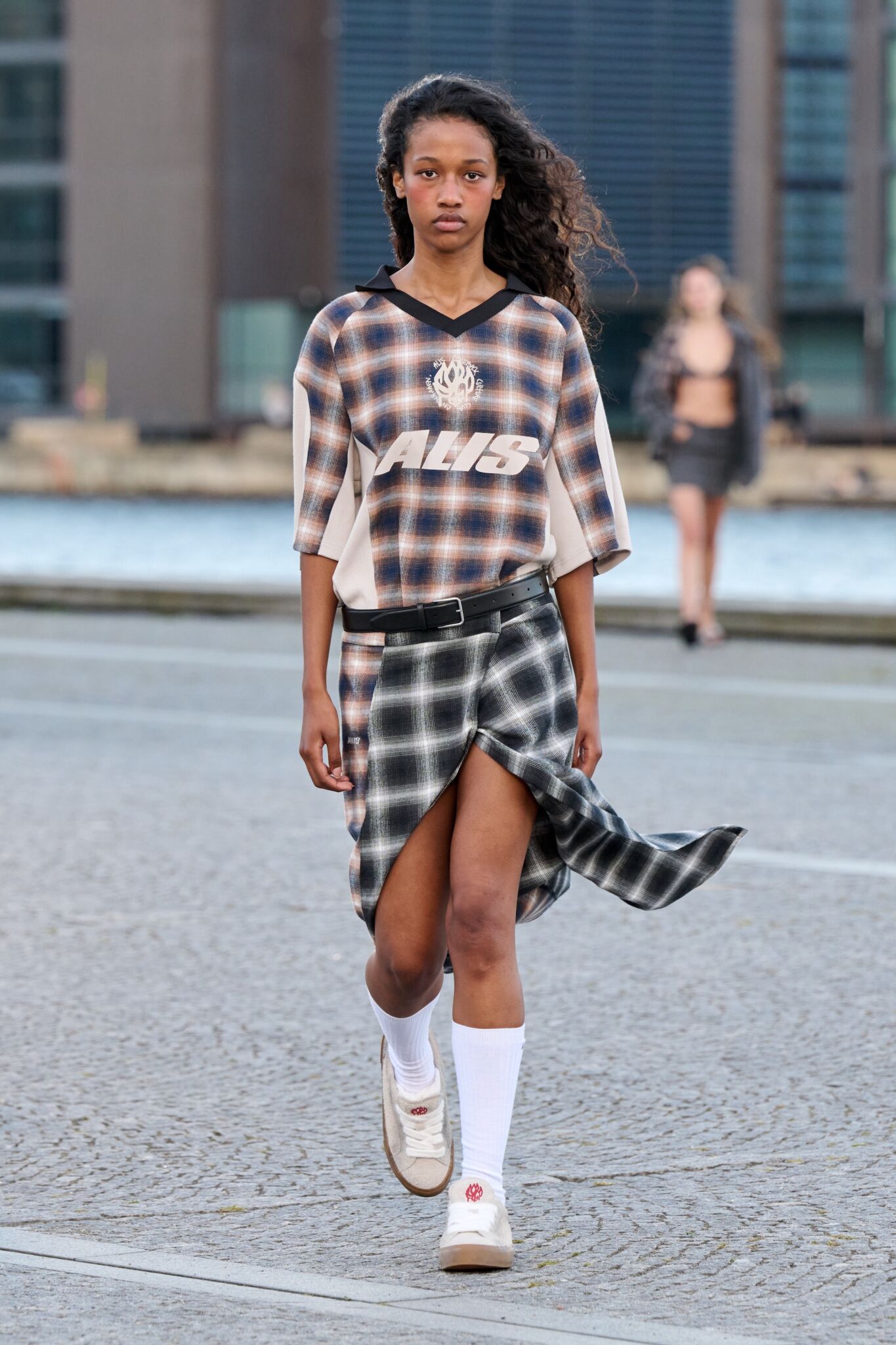
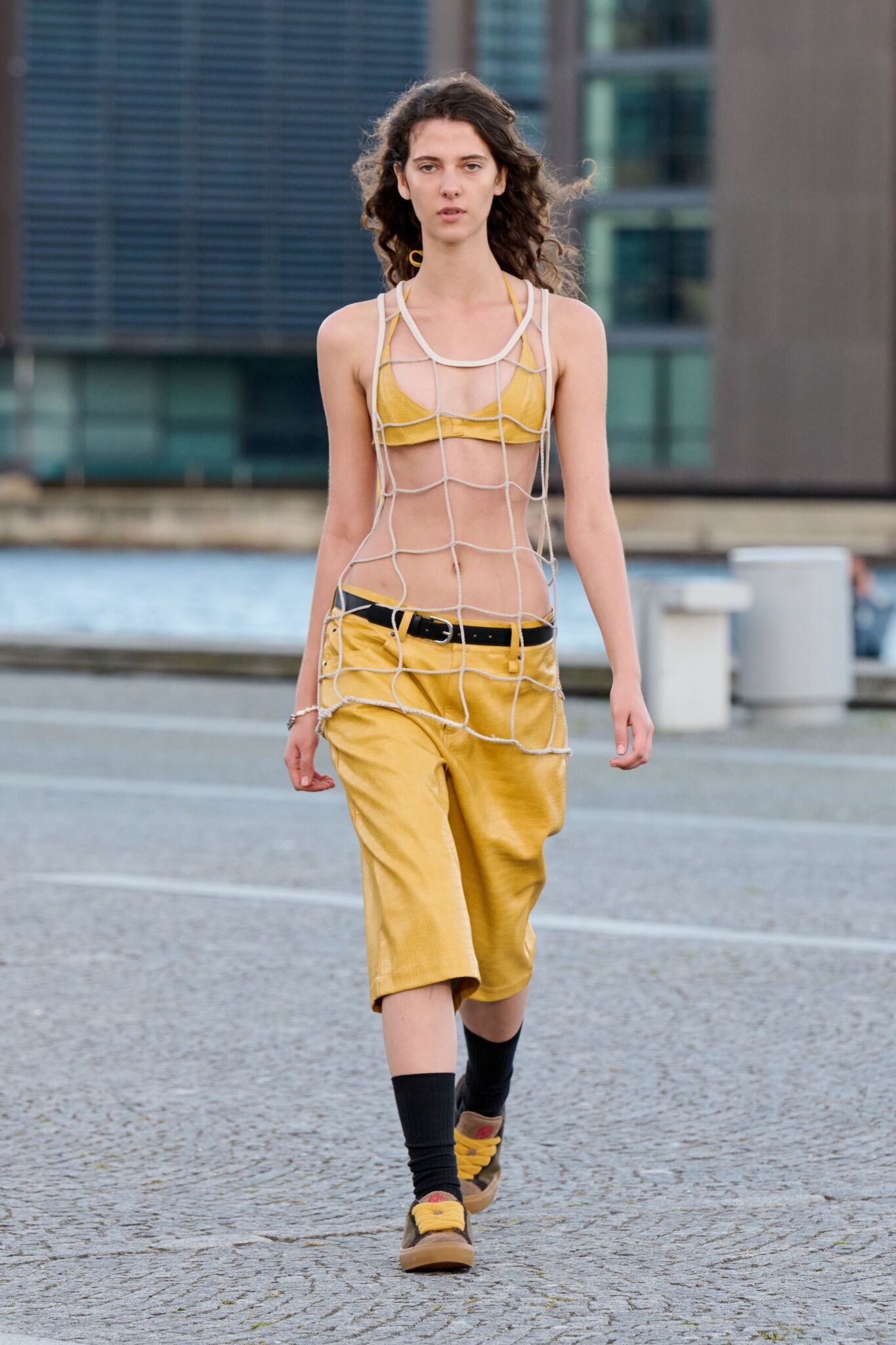
Photos courtesy of brand PR teams.


